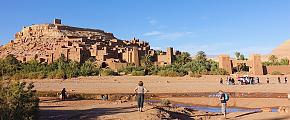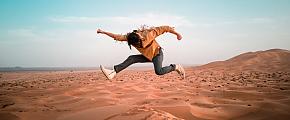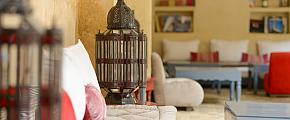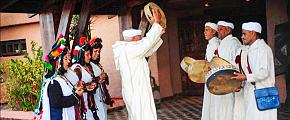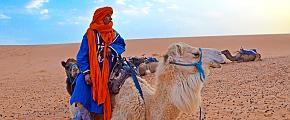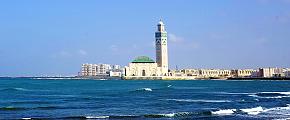When Is the Best Time to Go to Morocco
When is the best time to go to Morocco? This country can amaze you all year round. You can step into the blooming valleys in spring to feel the vitality, go to coastal cities in summer to enjoy the sea breeze, switch between the snow-capped peaks and oases of the Atlas Mountains in autumn, and have a thrilling surfing experience in winter. If you're planning your Morocco journey, read this article to learn about the best time and must-dos.
Morocco Climate
Morocco's climate is mainly divided into three types for different travel experiences. The northern coastal areas are hot and dry in summer, while mild and humid in winter. During these times, you can stroll through the blue streets of Chefchaouen or enjoy the magnificent scenery in Tangier. The temperature of central mountainous areas varies with altitude and is relatively humid throughout the year. You can hike the Atlas Mountains, exploring Berber villages and snowy mountain scenery. The typical desert climate in the east and south, such as the Sahara Desert, has little precipitation, with an average annual temperature of about 20 degrees Celsius. It is suitable for camel riding, sand sliding, or overnight stays in desert camps.
What to Wear in Morocco
The best dress code is a breathable half-sleeve T-shirt with knee-length pants and a long skirt for women. It is necessary to respect the customs of Arab countries, do not wear clothes that are too revealing or casual, especially in the central and southern mountainous areas or in the desert. If you want to visit the mosque, women need to cover their hair with gauze and wear trousers with long sleeves, while men also need trousers with half sleeves. If you plan to visit the desert areas, bring a thicker jacket as there is a temperature difference between morning and evening, and prepare a scarf to keep out the wind and sand.
Best Time to Go to Morocco
The best times to go to Morocco are Spring (March to May) and autumn (September to October). Flowers bloom in spring, you can see the Dades Valley is full of romantic roses and fragrances. In autumn, the mountains are golden, and you can hike the Atlas Mountains. In addition, you can explore cultural cities, such as Marrakech, Fez, and Chefchaouen, to visit exquisite palaces and the old city of Medina. Go to the Sahara Desert to enjoy sand skiing, watch the sunset, and camp under the stars. If you want to have a deep experience, festivals like the Rose Festival and Date Festival will make your journey colorful and charming.
Where to Visit During the Best Time
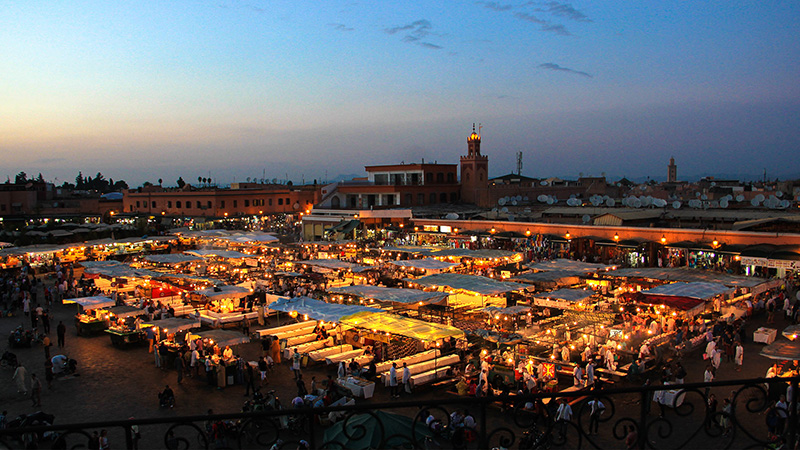 Djemaa El-Fna in Marrakesh
Djemaa El-Fna in Marrakesh
Marrakech
Marrakech is built on the edge of the Sahara Desert, presenting a rich oasis of tropical desert scenery. Citrus trees, olive trees, palm trees, and other fruit trees are lush and vibrant. The temperature from March to June and September to December is warm. You can choose to play around the Sahara Desert. Don't miss the Berber market. When night falls, you will feel as if you have entered a fantasy world rich in Arabian colors.
Chefchaouen
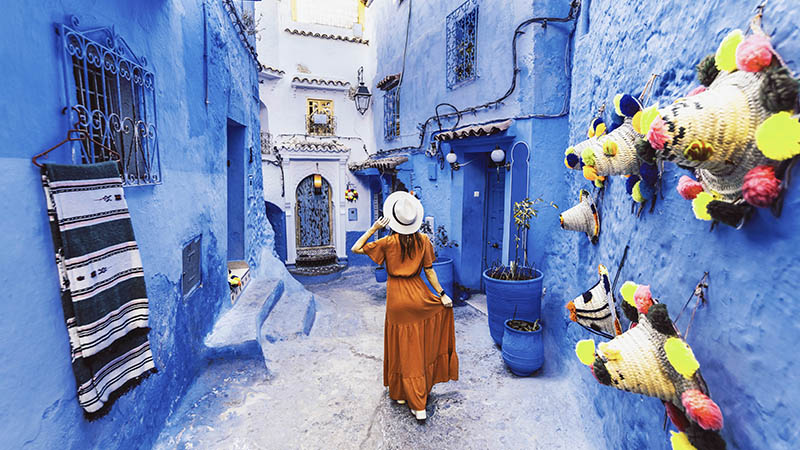 Young Woman Visiting Chefchaouen
Young Woman Visiting Chefchaouen
Chefchaouen is a city located in the northwest of Morocco, which is situated on the Mediterranean coast, with mild seasons from March to June and September to December. The doorways, steps, and walls of most houses are painted blue. It is a kind of blue that belongs to the beauty of the deep mountains. You can visit Medina, an old town full of rich Arab style, and choose souvenirs in handicraft shops.
Casablanca
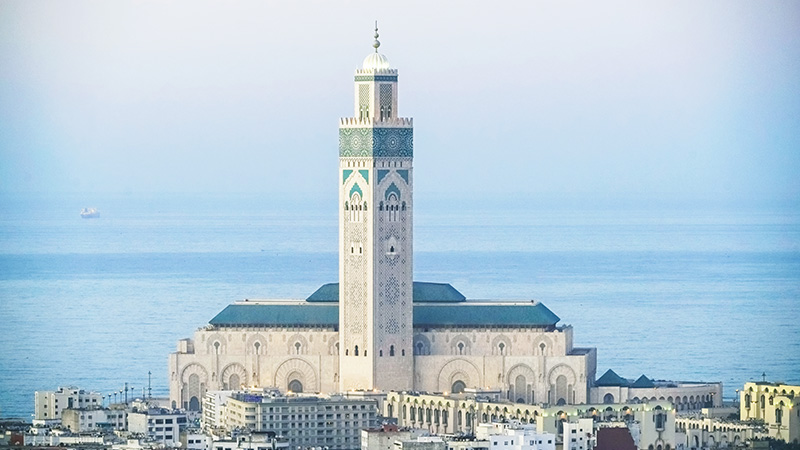 Cityscape of Casablanca With Grand Mosque
Cityscape of Casablanca With Grand Mosque
Famous for its movie of the same name, Casablanca means "White House" in Spanish. Most of the buildings in the whole city are white with traditional Moroccan elements. It is bordered by the Atlantic Ocean, and the infinite blue sky and water make it feel like a fairyland on earth. The fine sandy beaches stretching north and south for dozens of kilometers add endless fun to your trip in September. You can also see neat and tall rows of palm trees and orange trees in a unique and attractive environment.
Merzouga
Merzouga is not only a small village in the southeast of Morocco, but also the entrance of Morocco into the Sahara Desert. The best times to visit Merzouga are spring and autumn with mild weather. You can ride a camel or take an off-road vehicle deep into the desert. There are many tents in the desert, you can choose one of them to start your camping trip. After that, you can visit the highest Chebbis Hill in the Sahara Desert. At night, there will be bonfire parties in the desert. You can sing and dance with enthusiastic locals.
Fez
Fez was the first Arab city to be established in Morocco for over 2,800 years and is considered one of the holy places of Islam. During spring and autumn with pleasant weather, you'll break into a city that looks like a rainbow. With colorful shoes and hats, shiny brass and silver jewelry, freshly baked food, and squeezed juice, you can feel the strong African flavor. Down to the narrow streets, you can see traditional handicraft workshops, such as leather-dyeing workshops, copper plates, carpets, and handmade mosaics.
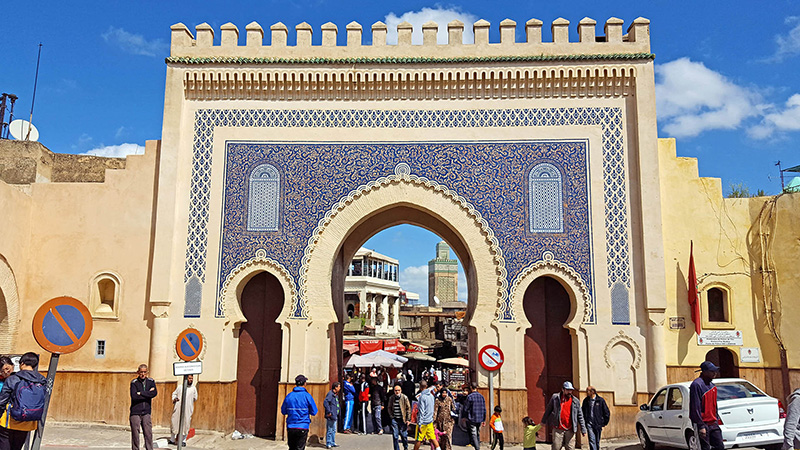 Medina of Fez
Medina of Fez
Rabat
Rabat is not only the capital of Morocco, but also a city with a predominantly white color scheme with mild and rainy weather throughout the year. You can explore kinds of historical and cultural relics, such as the Palais Royal, the Mausoleum of Mohammed V, the Kasbah of the Udayas, and the Citadel of Chellah. You can see five kinds of troops in different colors stand guard at the gate of Palais Royal, which has become a unique view of Palais Royal.
Must-Dos in Morocco by Season
Visit Morocco in Spring (March to May): Romantic Dades Valley
In spring, the Rose Festival in Dades Valley allows you to immerse yourself in the fragrance of roses. You can walk among the flowers and experience picking roses, or visit the rose distillery to witness how the flowers are transformed into rose essential oil, perfume, and beauty products.
If you want to enjoy the magnificent scenery, go to the Sahara Desert. In the spring desert, the nights are warm and comfortable. Drink a cup of mint tea in the camp and listen to the stories of the Berbers, you can feel the mystery and charm of this land.
Visit Morocco in Summer (June to August): Leisurely Beach Holiday
In summer, Morocco's inland is hot and dry, while the coastal areas are cool and pleasant. The comfortable climate and long coastline give it many beautiful beaches.
The beaches in Essaouira are flat and wide, making it a great place for kite surfing. You can also sunbathe leisurely on the beach to enjoy a pleasant holiday. In Agadir, you can listen to the sound of the waves, or stroll along the beach promenade in the evening and taste fresh seafood barbecue.
Visit Morocco in Autumn (September to November): Exciting Mountain Hiking
Autumn is the best time to explore Morocco's Atlas Mountains, with cooler weather and colorful mountain scenery. You can see the leaves gradually turn golden and orange, creating a magnificent picture with the snow-capped peaks.
For mountaineering enthusiasts, the exciting challenge is hiking Mount Toubkal, the highest peak in North Africa. You'll pass Berber villages, alpine pastures, and glacial streams, and finally stand on the summit to feel the grandeur of nature.
Visit Morocco in Winter (December to February): Thrill Surfing
For surfing enthusiasts, winter in Morocco means strong Atlantic waves and stable weather, allowing you to enjoy a world-class surfing experience. Essaouira's beaches, famous for strong winds, are suitable for kitesurfing and windsurfing. Taghazout in Agadir has stable waves, and everyone from beginners to professional surfers can find a suitable wave here. You can also lie on the beach leisurely and bask in the warm winter sun.
Contact Odynovo to Plan Your Morocco Tour
If you are planning a trip to Morocco, please contact us or send an email to [email protected]. You will have a tailor-made Morocco trip created by our travel experts. Traveling with Odynovo, you can experience the best of Morocco.
Quick Question
Related Posts You May Like
What Our Clients Say
Explore the latest verified reviews of Odynovo's travel services on Tripadvisor, Google, Trustpilot, Product Review and more trusted platforms.
SUBSCRIBE TO WIN A FREE TOUR
Subscribe to our newsletter for a chance to win a free 7-day tour to India! And more insider travel news, exclusive offers, and inspiration will be sent straight to your inbox. Check our previous newsletters and get some sparks.




